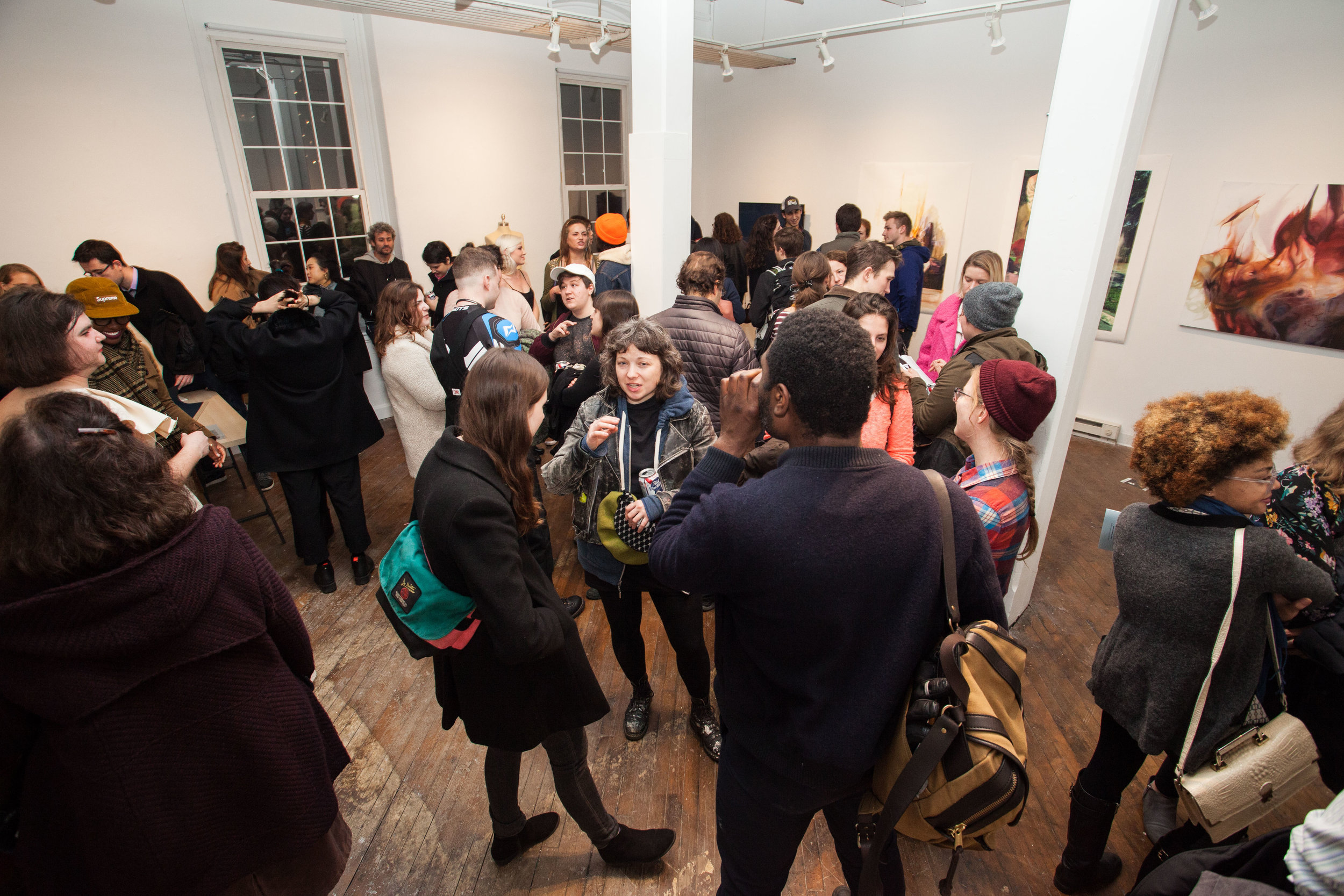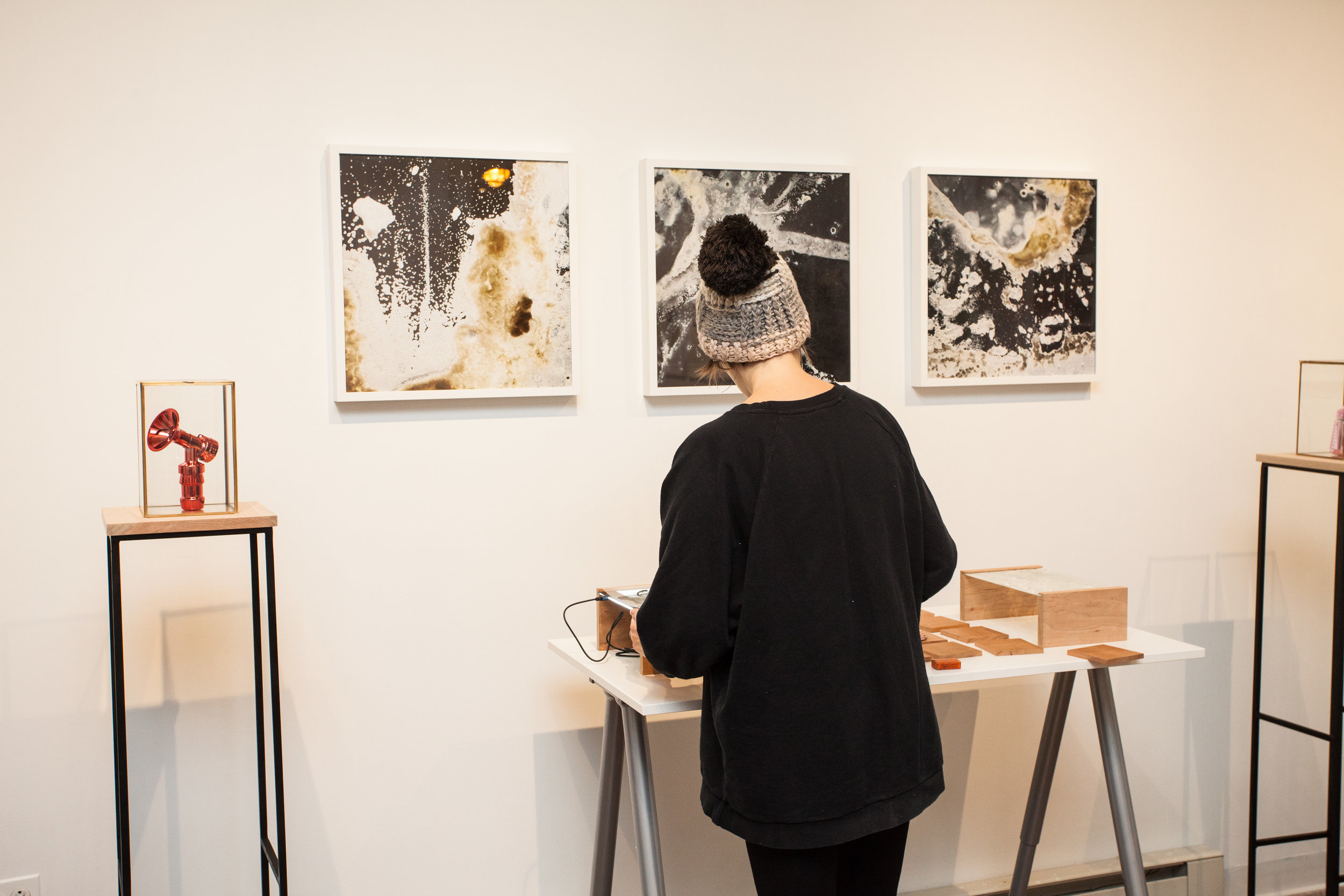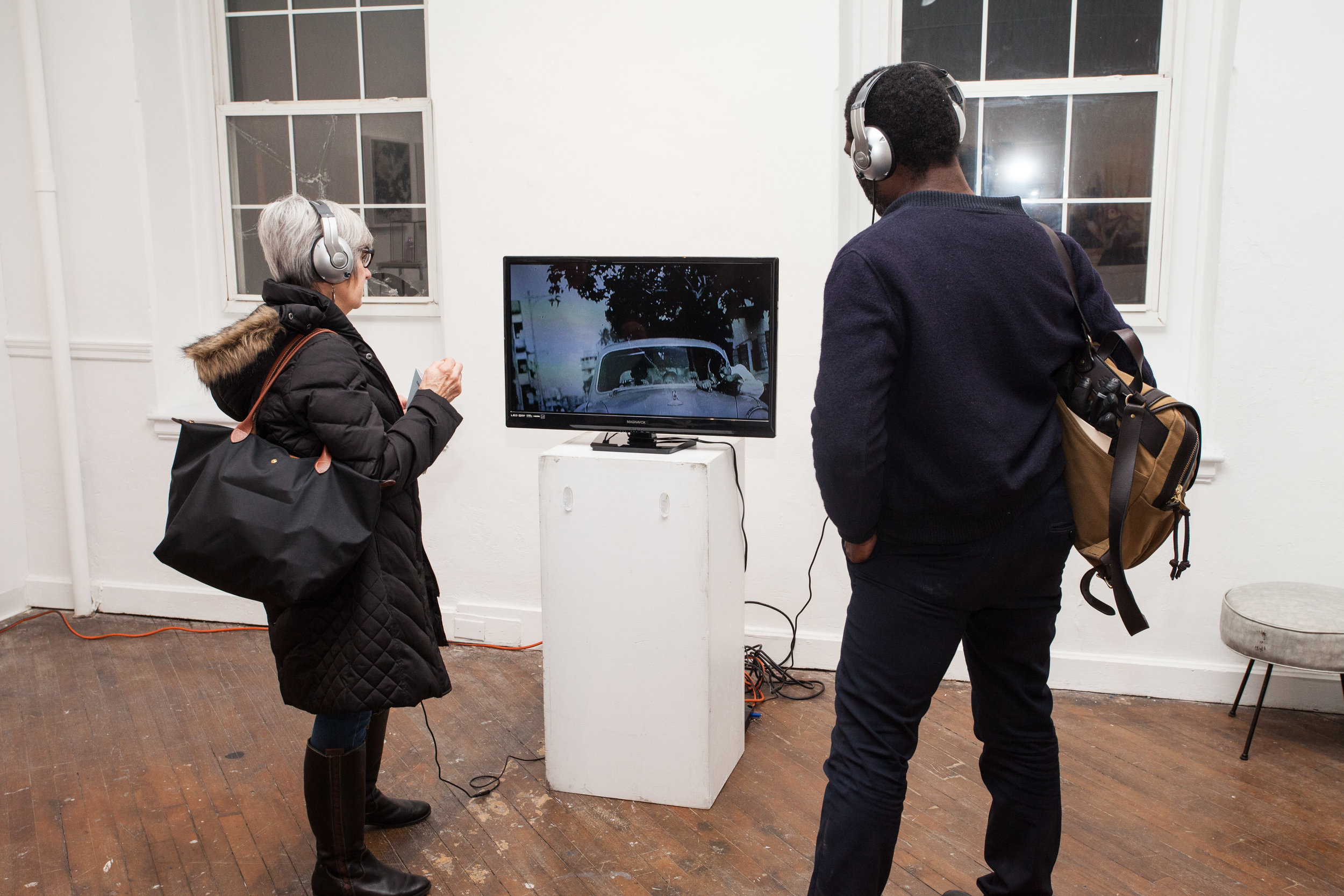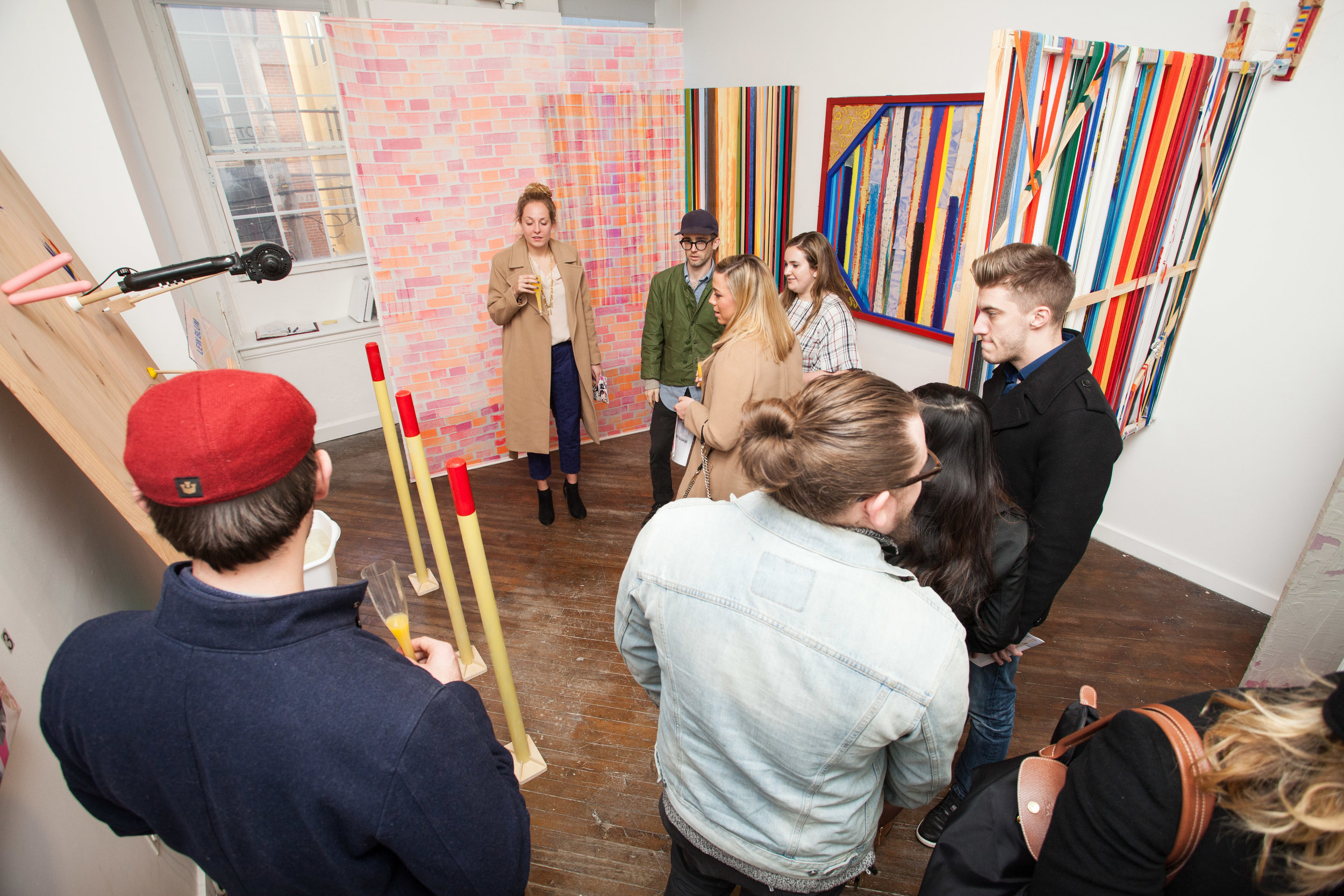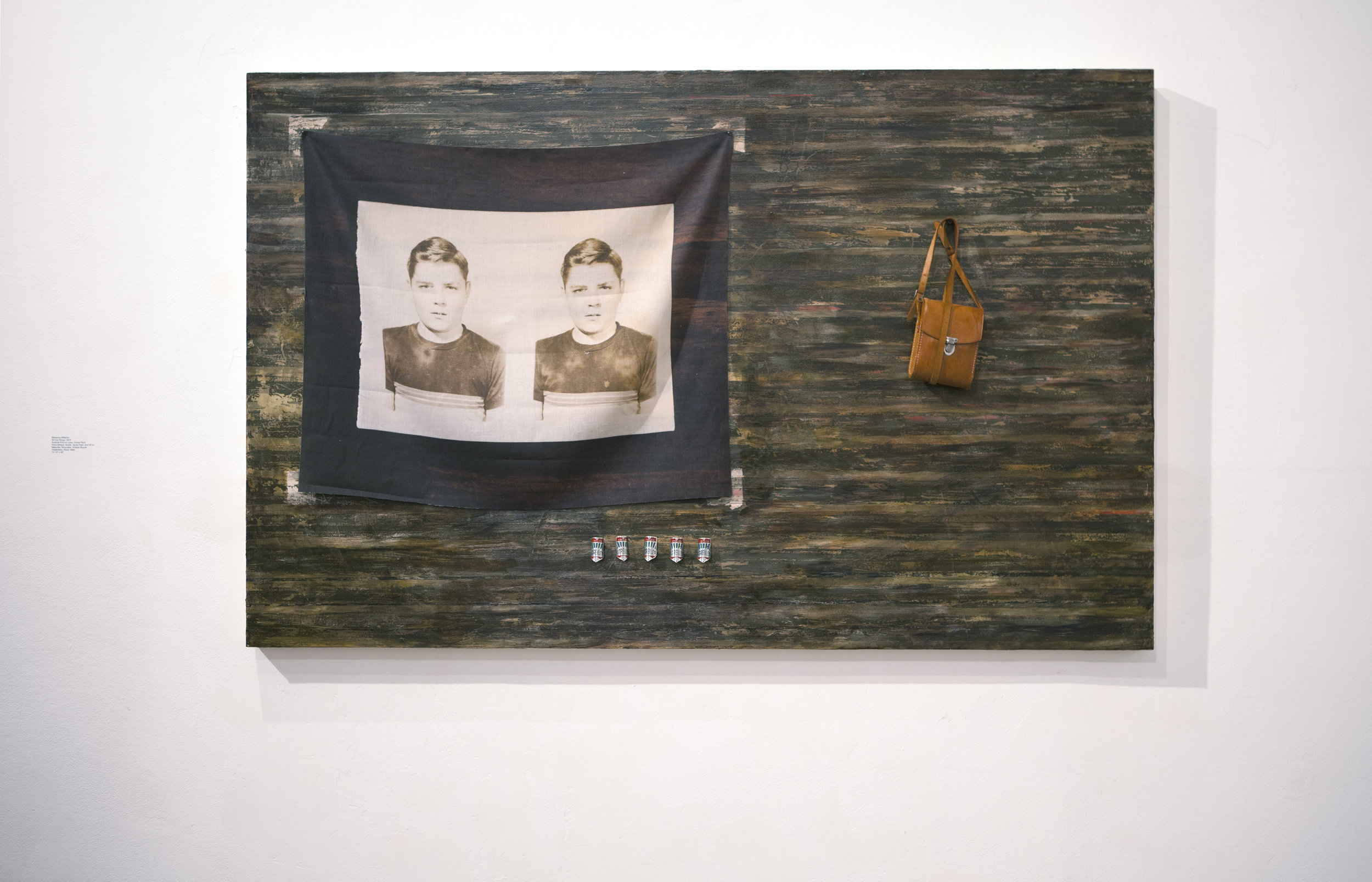Little Berlin gallery is pleased to present UNcommons, a guest exhibition with the University of Pennsylvania curated by Haely Chang, Kirstin Gill, and Hilary R. Whitham. UNcommons deals with issues of space and spatial interventions in the physical, psychological, and digital worlds.
UNcommons deals with issues of space and spatial interventions in the physical, psychological, and digital worlds. The exhibition is structured around two organizing questions: How does the body perceive, negotiate, and move in public, private, and virtual spaces? How do these spaces function, and what possibilities and methods exist for their reconfiguration, remembrance or disruption? The exhibition showcases five artists—Shaina Gates, chukwumaa, Kaitlin Pomerantz, Marianna Williams, and E. Jane—whose work presents possible, and often complex, answers to these questions in a variety of media, including natural and found materials, paper, photography, video, and sound.
Recollecting memories of her childhood through correspondences with her brothers, Shaina Gates then reconstructs them via mapping and installation. By juxtaposing the letters, maps, and objects in the gallery, Shaina assembles her and her family's scattered memories and materializes them as empirical space. chukwumaa engages in sound installation and performance art as means of public address. Exploring how the aural element shapes and controls our environment, and also opens up possibilities for spatial reconfiguration, sound, in chukwumaa’s work, is both a method of control constantly transgressed and an inherently subversive medium. Kaitlin Pomerantz investigates the concept of self-location and disorientation in the interstices between urban and natural spaces. Her digitally rendered camouflage curtains evoke the genres of trompe l’oeil, botanical illustration, and landscape painting simultaneously. Marianna Williams makes manifest her explorations of the home and nostalgia through enquiries of physical thresholds where performances of identity are crafted in liminal spaces, affecting social practices that can be traced in both physical and digital environments. She interrogates and abstracts dualities such as past and present, public and private, presence and absence through physical instillations of constructed spaces as well as in digital representations. In a practice located mainly in the internet, E. Jane navigates issues of media, consumerism, and the individual. E. Jane explores the potential for inhabiting, creating realities, and mobilizing subjectivity in the virtual realm, giving form to new spaces for public interaction.
Providing continuity to all of the artists’ investigations is the timeless question of how the human subject inhabits, shapes, perceives, and represents its environment. We feel the urgency of this exhibition following events around the globe related to issues of public assembly, particularly for the oppressed or marginalized body. This exhibition is needed, as well, in light of the continued advance of another spatial domain that shapes how we understand the world and ourselves. The internet now pervades almost every other, real space of our existence from public to private, urban to remote. Virtual space links once disparate domains, and provides new territories whose coordinates, resources, and uses are still being explored.
All the artists seek to make sense of these spaces - real, virtual, psychological, and social - while simultaneously confusing and troubling these very categories in their deployment of materials and processes of making. Furthermore, their aesthetic investigations entail engagements with temporality, from a co-habitation with the virtual space-time of the internet to remembrance and recollection of past events, whether personal or collective.












